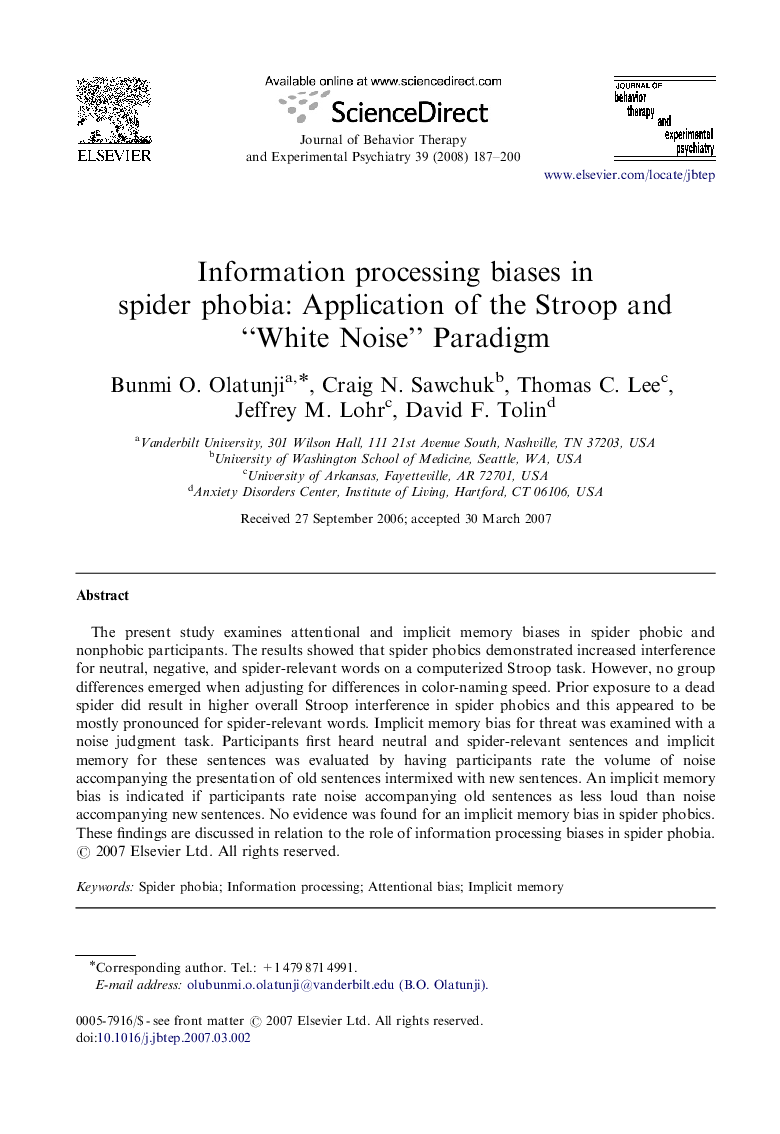| Article ID | Journal | Published Year | Pages | File Type |
|---|---|---|---|---|
| 10448322 | Journal of Behavior Therapy and Experimental Psychiatry | 2008 | 14 Pages |
Abstract
The present study examines attentional and implicit memory biases in spider phobic and nonphobic participants. The results showed that spider phobics demonstrated increased interference for neutral, negative, and spider-relevant words on a computerized Stroop task. However, no group differences emerged when adjusting for differences in color-naming speed. Prior exposure to a dead spider did result in higher overall Stroop interference in spider phobics and this appeared to be mostly pronounced for spider-relevant words. Implicit memory bias for threat was examined with a noise judgment task. Participants first heard neutral and spider-relevant sentences and implicit memory for these sentences was evaluated by having participants rate the volume of noise accompanying the presentation of old sentences intermixed with new sentences. An implicit memory bias is indicated if participants rate noise accompanying old sentences as less loud than noise accompanying new sentences. No evidence was found for an implicit memory bias in spider phobics. These findings are discussed in relation to the role of information processing biases in spider phobia.
Related Topics
Health Sciences
Medicine and Dentistry
Psychiatry and Mental Health
Authors
Bunmi O. Olatunji, Craig N. Sawchuk, Thomas C. Lee, Jeffrey M. Lohr, David F. Tolin,
